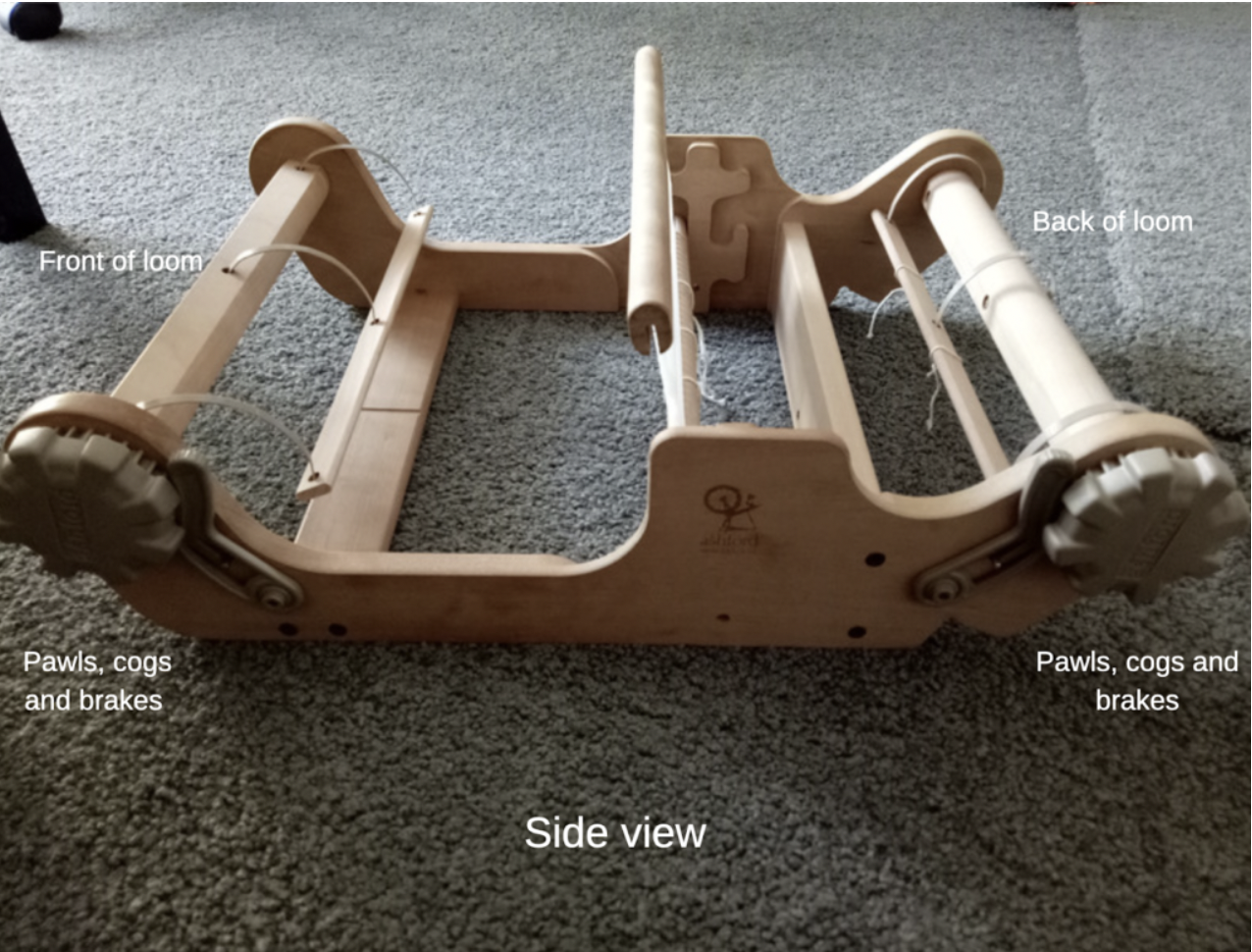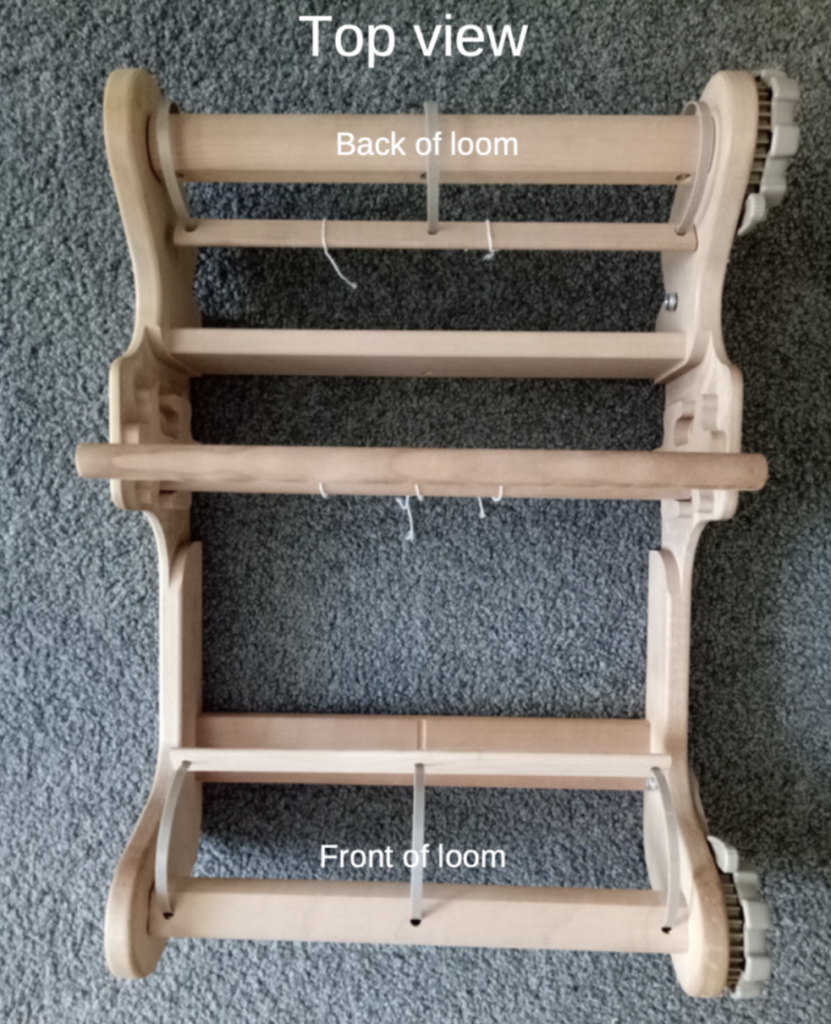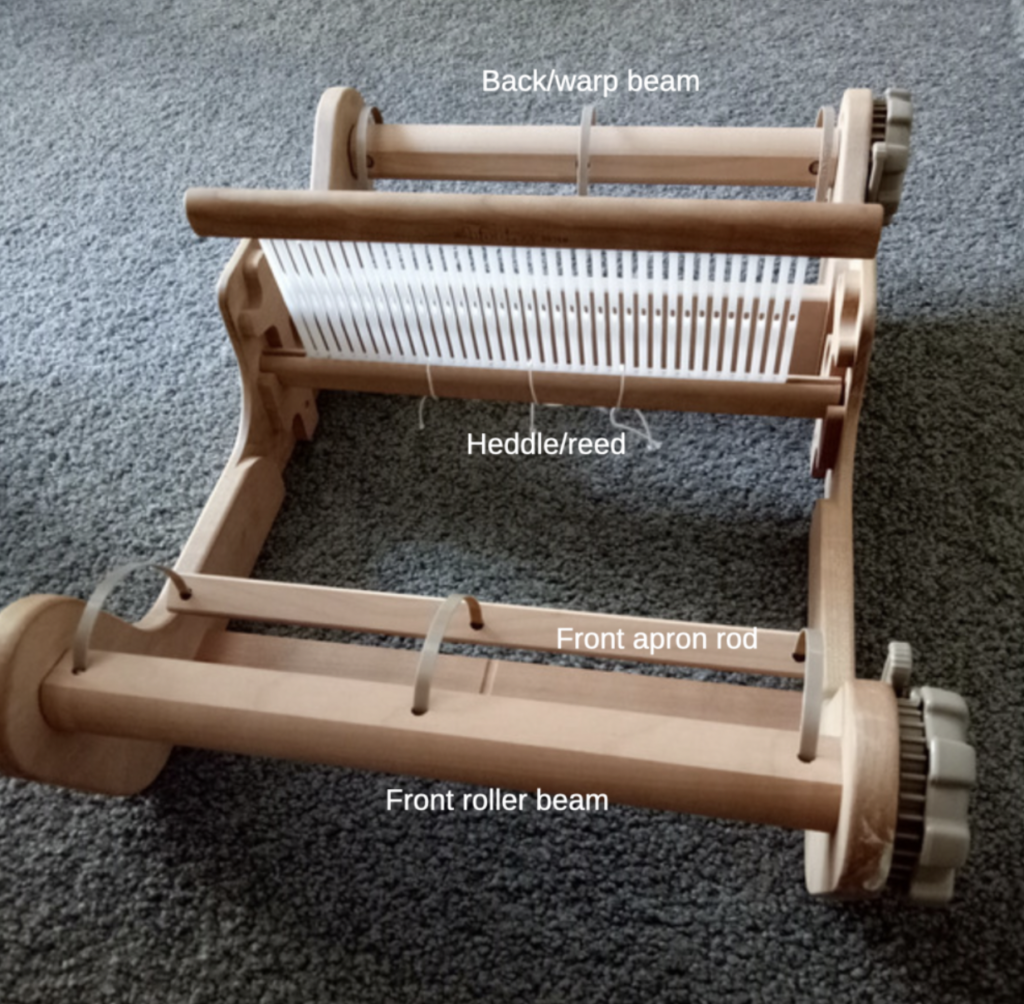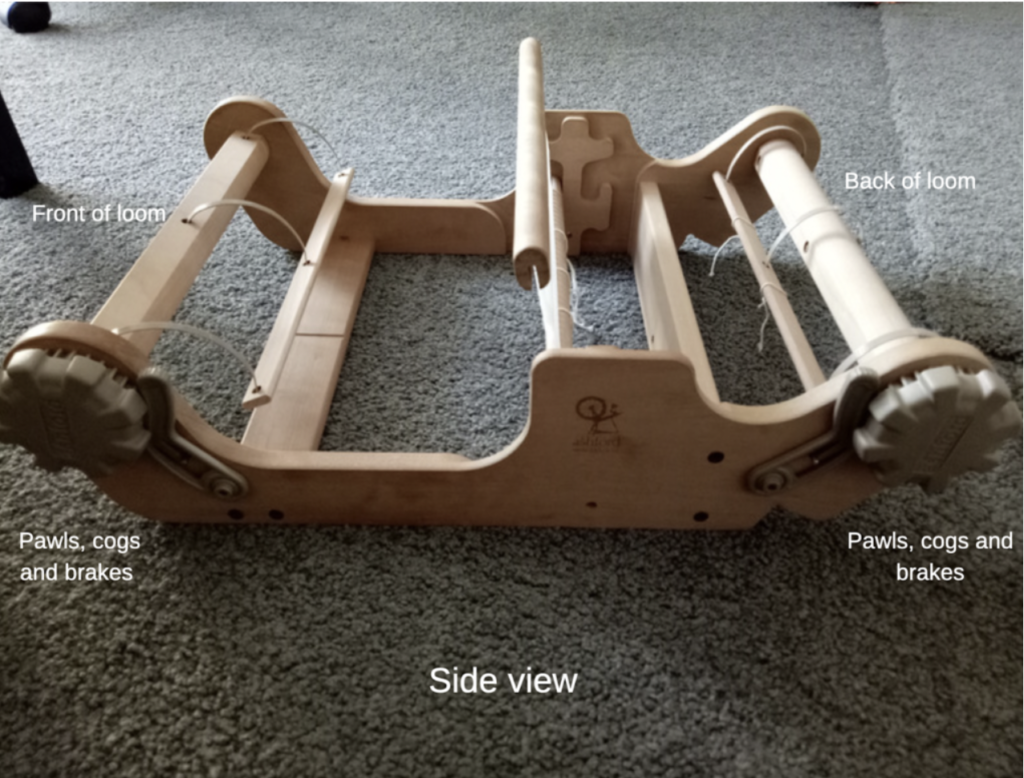Then you might be wondering what exactly IS a rigid heddle loom?
The wonderful rigid heddle loom has gained considerable popularity in recent years due to it’s affordability, portability and versatility as a weaving loom.
The rigid heddle loom is essentially a rectangular, wooden frame loom. However, it differs from the simple frame looms that are now readily available and often used for simple tapestry, as it has a space for a heddle/reed, making it capable of producing sheds (gaps or spaces) to weave through.
It can be called a 2 shaft loom (though some argue that this is not technically true because it doesn’t have traditional shafts – whatever the case, 2 sheds are possible), but has further reaching capabilities with a healthy dose of inquisitiveness and exploration!
The “rigid heddle” that the loom gets it’s name from is an ingenious device typically made from a wooden frame and plastic vertical pieces. A single heddle/reed gives your loom holes and slots (these are what allow you to create the sheds) plus it doubles as a beater.
The more of these heddles/reeds you use, the greater the possibility and range of sheds, and therefore patterns, become available. Another benefit of using 2 heddle/reeds at a time is the ability to weave double width cloth, which is ultra cool and can be seen in my Double Weave Baby Blanket class or Weaving with Two Heddles technique class.
Some rigid heddle looms now come with a built in double heddle block, which means it is easy to have 2 heddle/reeds positioned on your loom.
In it’s most basic, 2 shed format, you place the heddle/reed in either an up or down position, creating a different shed each time. Using these 2 sheds will give you a plain weave interlacement.
This same heddle/reed will have a predetermined size or sett, which means that once you have established the sett for your project, you choose a heddle/reed that matches. As you thread the heddle/reed, the rigid plastic slots keep the threads at a certain spacing, and that is what makes your sett.
The rigid heddle loom, similar to table/floor looms, has a front and back roller, meaning that you can put on a long warp and you advance the warp as you go so that the cloth will roll around the front beam as you weave. Some looms will have the option of buying an additional warp beam that attaches to the loom and allows you to put on extra long warps. It also has a tensioning system, which varies from loom to loom, but usually involves winding a pawl or a crank at the side of the loom to achieve good tension.
In addition to your loom, you can purchase a stand, which, in my opinion is a really good option. Buying a loom and stand combo can work out more economically. I talk more about that in this video.
*This post contains affiliate links. For more information, please see my disclosure policy.
If you purchase a rigid heddle loom new, it will come with everything you need to get started (except the yarn!)
I hope this has helped you to begin to wrap your head around what a rigid heddle loom is.
If you’re confused as to which loom is the right one for you I have a comprehensive First Loom Buyers Guide that covers a range of looms to help you make an educated decision.
Until next time…
Happy Weaving!





Thank you Kelly for sharing your knowledge and love of rigid heddle weaving. I got my 16″ Sampleit thinking of it as a lesser, make do loom, to take along when I am away from home. It is soooo much more than that!